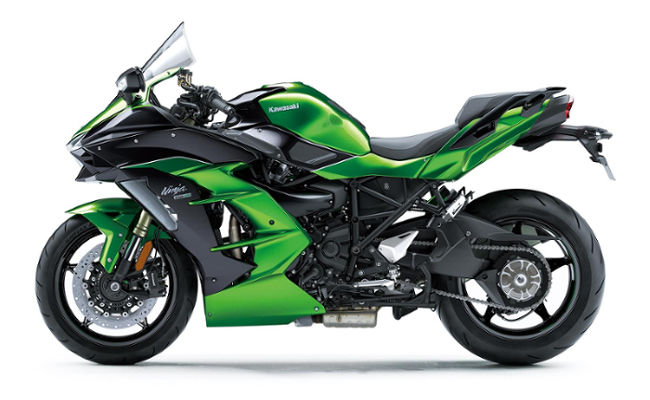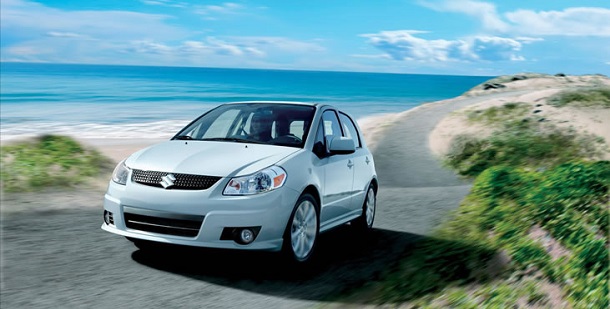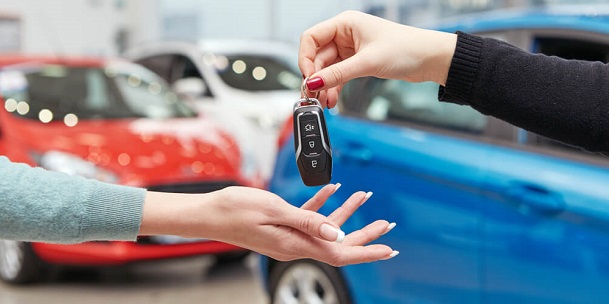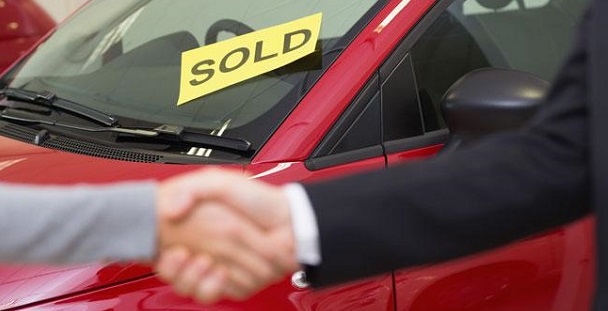
When you decide to purchase a new motorbike, the chances are you want to get your hands on your new wheels as quickly as possible. Before you can get your leathers on and hit the road on your new bike, you first need to decide how to fund your purchase.
If you aren’t lucky enough to have the cash available to buy a new motorbike outright, then motorbike finance or a loan agreement might be an excellent option to consider. This allows you to spread the cost of your new bike over time, but it is essential to make sure you are fully aware of all your motorbike financing options before making a decision on which is best for you.
What is a motorbike loan?
Simply put, a motorbike loan is a personal loan where the funds are used to buy a motorbike. You will borrow the money needed to purchase the bike outright from a lender, and then agree to pay back the full loan amount plus interest over an agreed period of time.
Just like with a personal loan, you can choose to either have a secured or unsecured motorbike loan. However, most motorbike loans are secured against the vehicle itself. This means that your new bike is used as collateral against the loan amount, and if repayments are not kept up, the lender can repossess the vehicle. Unsecured motorbike loans are also available, but usually, require you to have a high credit score and will often come with much higher interest rates.
What about bad credit options?
Most lenders will offer bad credit motorbike finance deals that are secured against the new vehicle to borrowers with poor credit scores. This is because they are seen as less risky as the loan amount can be recovered from the bike should repayments be missed. If payments are not kept up, it will have a negative impact on the borrower’s credit score. Furthermore, it could leave you struggling to be approved for any other types of borrowing in the future.
It is possible to get pre-approved for a motorbike loan before you have chosen your new bike. The amount you can borrow will depend on your individual financial situation.
What is motorbike finance?
Motorbike loans are not the only option for borrowing to purchase a new bike; you could also choose to get motorbike finance to fund your new purchase. Most major vehicle dealerships and manufacturers will offer some sort of finance scheme to help customers afford their dream bike. Motorbike finance is an agreement between you and a lender, where you agree to pay for the motorbike over a period of time.
There are a range of different types of motorbike finance available, and it is vital that you understand them all in order to decide which, if any, is right for you.
All types of motorcycle finance will require you to pay a deposit up front and then pay monthly for the agreed duration of time. The higher the deposit you pay upfront, then the lower interest you will pay overall as you are borrowing a smaller sum of money.
Motorbike finance lenders will run a credit check on any borrower applying to take out a finance agreement. This is so they can determine how likely you would be to keep up repayments and how risky you are to lend to. Individuals with a bad credit rating will likely struggle to be approved for any type of motorbike finance.
Motorbike finance offers an easy option for spreading the cost of a new bike, and usually means you can choose a vehicle that you would not be able to afford to buy outright. The length of a motorcycle finance agreement depends on the lender, and the longer the finance term then, the lower the monthly repayments will be; however, interest will end up being higher in the long run.
Like with a secured bike loan, the finance company can repossess the vehicle if repayments aren’t being made.
When looking at motorbike finance, never rush into signing anything until you are completely clear on all of the terms and conditions of the agreement.
What are the types of motorbike finance?
When it comes to motorbike finance, there are two main types that you should consider. Make sure you properly understand the differences, so you can pick a finance option that works for you.
1. Hire Purchase Agreements (HP)
One of the most common types of motorbike finance is a hire purchase agreement. This is a type of finance that is secured against the bike and means that the vehicle will not legally belong to you until the final repayment has been made.
During the finance term, you are not able to sell the bike without getting the lenders permission. Most lenders require you to pay roughly 10% of the motorcycle cost as a deposit, and then the remaining balance is paid over fixed monthly instalments plus interest. The interest rates for a hire purchase agreement vary greatly depending on the lender and your own financial situation.
It is possible to get a hire purchase agreement that also includes your insurance and servicing costs so be sure to find out what is included when comparing your options.
2. Personal Contract Purchase Agreements (PCP)
Similarly to hire purchase agreements, personal contract purchase includes an upfront deposit and fixed monthly repayments. However, the main difference is that the motorbike will not belong to you at the end of the agreement.
Once you have paid all the monthly repayments and have reached the end of the agreed term, then you can choose to pay an additional lump sum to purchase the bike outright or return the car to the lender. If you want to regularly update your motorcycle and get a new one every few years, then a personal contract purchase could be perfect for you. You can choose to get a new vehicle every time your contract ends, allowing you to keep updating your bike and taking away the hassle of ever having to sell a bike on.
If you are purchasing a second-hand motorbike, always run a finance check on it beforehand to make sure it is not linked to an outstanding finance agreement. If a vehicle is financed, then it is likely to be legally owned by the lender, and they would have every right to repossess it if payments aren’t being made.
Who can get motorbike finance?
Vehicle finance agreements are available to anybody who is over the age of 18. However, you will need to pass a credit check to be approved. The lender will check your credit history in order to decide if you are likely to keep up the repayments and determine if you can reasonably afford the agreement.
Each lender will have their own criteria for who will be approved for a finance deal, so be sure to check with your lender before applying.
Some motorbike finance providers will specialise in offering finance for individuals with poor credit scores. These specialist lenders will generally charge higher interest rates than others because having adverse credit makes you riskier to lend too.
It is not a requirement to hold a full UK driving licence in order to be approved for motorbike finance. However, you do have to provide proof of identification as well as proof of income.
What about benefits income?
It is often assumed that individuals on benefits will not be accepted for vehicle finance, however, sometimes this is not the case. If you have a good level of income to reasonably make repayments but are also on benefits, then some lenders may still accept your application. There is also the option to use a guarantor finance if the lender requires additional security.
You should always bear in mind that with both motorbike finance and secured motorbike loans your bike could be repossessed if payments are not kept up. If payments are missed, this will also negatively impact your credit score and result in further debt.
7 advantages of motorbike loans
Using a motorbike loan to purchase your new wheels has its advantages over other funding methods. These benefits should be considered and compared with other options before you make a final decision on how to fund your new motorcycle. The main advantages of a motorbike loan are:
1. Low deposits.
For most motorbike loans the deposit you need to pay upfront is lower than with bike finance, so if you have less cash immediately available, you could still get your hands on your dream bike.
2. Additional payments.
With a motorbike loan, most lenders will allow you to make additional payments as you please, or even pay off the full amount early if you want to. This means if you find yourself with some extra money and want to pay off your debts then you can do, which will also reduce the amount of interest you pay overall.
3. Legal bike owner.
Unlike with some motorbike finance agreements, when you use a motorbike loan to purchase the vehicle, you will be the legal owner from day one. Although the bike may be used as collateral against the loan so if you do decide to sell it while you still have the loan, you may have to get permission from your lender.
4. No mileage restrictions.
Some motorcycle finance options will limit the amount of mileage you can do on your new bike. When you use a motorbike loan, there are no mileage restrictions, and you are free to use the bike as you please.
5. Large choice of lenders.
Most high street banks and other major lenders will offer some form of vehicle loan which can be used to purchase a motorcycle. There are also specialist online lenders that focus on nothing but motorbike loans. This gives you plenty of choice when choosing your loan provider and gives you the freedom to shop around to get the best deal.
6. The vehicle is yours forever.
Some motorbike finance agreements require you to give the vehicle back at the end of the contract or make an additional payment in order to keep it. With a motorbike loan, it is yours until you decide to sell it on.
7. Available with poor credit.
If you are applying for a secured motorbike loan, then most lenders will accept individuals with poor credit ratings. As the new bike is used as collateral against the loan amount, the lender is protected and has the right to repossess the bike if repayments are not made.
When comparing motorbike loans, check that the lenders you are considering are registered by the Financial Conduct Authority (FCA). This guarantees that they are abiding by all relevant rules and regulations as a loan lender.
Six disadvantages of a motorbike loan
As with any financial product, motorcycle loans do have their downsides that should also be considered. The main disadvantages of a motorbike loan are:
1. Repayments must be made even if you no longer have the bike.
If you decide to sell the motorcycle, or if it gets written off before the full loan amount has been paid off, then you must still make all the repayments and settle the full amount borrowed.
2. Danger of repossession.
If you have a secured loan against the motorbike, then it is at risk of being repossessed if repayments are not made. Your lender will have the right to reclaim the bike if you default on the loan.
3. Reduced value.
As with any vehicle, motorbikes lose their value quickly over time. Quite often by the time, the loan has been fully repaid; the motorcycle is worth much less than you have paid for it. This is not a problem for individuals who want to keep the same bike for a long time, but if you’re going to update your vehicle regularly, then this may not be the best option.
4. Negatively impact your credit rating.
If you don’t keep up the repayments and end up defaulting on the loan, then it will have a detrimental effect on your credit score. This will impact your ability to get financial products such as loans, finance agreements, and credit cards in the future.
5. High interest rates.
Some motorbike loan providers might charge very high interest rates compared to others. It is essential to shop around to make sure you are getting a good deal.
6. Additional fees and charges.
Most motorbike loans will have additional charges involved that you may not be aware of. These could be late payment charges if repayment isn’t made on time, as well as additional interest on late payments.
Check your credit rating with a credit reference agency before applying for a motorbike loan. The higher your credit rating, the better deal you are likely to be given by the lender.
Alternatives for funding a new motorbike
Buying a new motorcycle is a substantial investment, and it is essential to make sure you and paying for it in the best way for you and your financial situation. If a motorbike loan or motorbike finance agreement doesn’t suit you, there are other options available for funding the purchase of a new motorcycle:
-
- Credit Card: If you already have a credit card with a limit high enough to cover the cost of your new bike, then it can be a great way to fund the purchase without having additional credit checks and applications. However, depending on the card you might end up paying very high interest rates, so it is essential to be sensible to shop around for the best 0% purchase deal when possible.
- Personal Loan: Similarly to a motorbike loan, you could take out a unsecured bank loan to cover the cost of a new motorcycle. The main difference is that you are not committing to spending all of the loan amount on a bike; a personal loan can be spent on whatever you choose.
A personal loan usually won’t be secured and won’t use the bike as collateral, so there is no danger of repossession, but this does mean that those with poor credit could struggle to be approved.
- Home Equity: If you own your own home, then you could use it to help finance your new motorbike. You can release some of the equity from your property using a second mortgage. This would give you a cash lump sum that can be used to purchase your dream motorbike. Home equity loans do put your property at risk as they use it as security against the loan amount, so if repayments are not kept up, then your home could be repossessed.
Every type of borrowing can be risky and result in more substantial debt than planned if repayments are not kept up. No matter which option you choose to finance your new motorbike, make sure you can realistically keep up the repayments. To get an idea of the costs of taking out a loan you can use this handy motorbike finance calculator.



